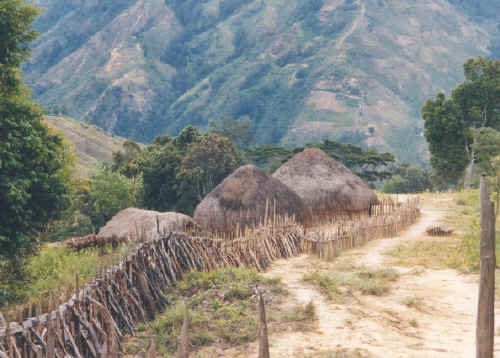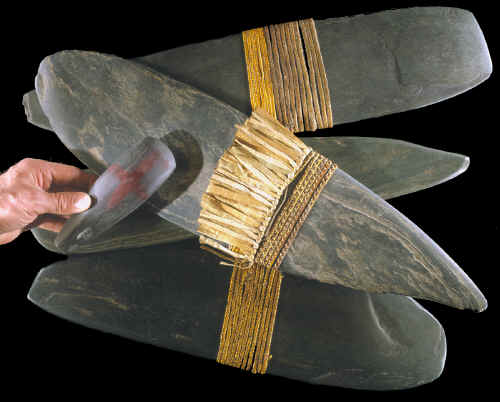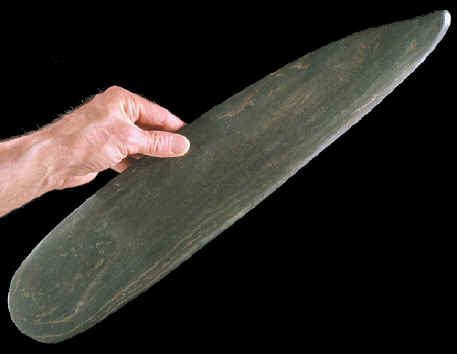|
|
|
Some stone tools are still being used in New Guinea. People living in the more isolated areas still maintain some of that technology. In contrast, most of the worlds anciently hafted and decorated stone artifacts are no longer intact. Stone spear points, arrow points, knives, scrapers, adzes, axes, etc. have lost their handles, shafts and decorations. Much of what is known about hafted stone artifacts and ceremonial objects has come from scientists studying cultures who are still using them. People living in all of the Americas, Australia and many widely scattered Pacific islands were still making and using stone tools and ceremonial objects when the Europeans arrived. |
|
|
On the island of New Guinea, much of the weaponry, food processing tools and ceremonial objects were made of wood. These were in the form of such things as bows and arrows, clubs, spears, spear throwers, fire starters, masks, food hooks, statues, etc. The most durable and long lasting objects were made of stone. The majority of these artifacts include adzes, axes, chisels, knives, portable grinding slabs, hand-held grinding stones, hammerstones and display- exchange stones. |
|
|
The Dani culture in Irian Jaya has been studied by anthropologists for many years. A unique phenomenon in this area is the use of display-exchange stones. Hampton reports in his book "Cultures of Stone" that display-exchange stones could be used as profane stones or selected by individuals to be made into sacred stones. The profane use means that these stones were used in public ceremonies such as funerals and weddings and given away to deserving people. For example, someone who provided pigs for a funeral would probably receive one or more exchange stones. On the other hand, sacred stones are selected by individuals. They are cared for by keeping them in special storage areas (ganekhe cabinet) out of sight of the public. They are maintained by three or more men in the sacred house (ganekhe house). These men perform rituals that empower the stones to maintain a connection with and harness the power of the unseen supernatural world of ghosts and spirits. |
|
|
|
|
A great deal of energy is expended by the Dani in order to keep their ancestral ghosts and spirits in order. Their goal is to keep the malevolent ghosts out of the houses, living compounds, potato fields, water supplies and other areas. Ghosts are placated by thoughtful deeds and constant sacrificial rituals. "The logic of their (Dani) existence rests on the premise that all happenings are the result of both human and ghostly instrumentality," (Gardens of War, p. 87). |
|
| CONTINUE ON TO PAGE THREE | |
|
"REFERENCES"
1968,
Gardner, Robert & Heider, Karl G., "Gardens of War, Life and
Death in the New Guinea Stone Age," p. 87. |
|



